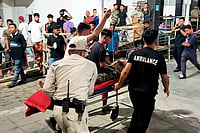A second way in which the North-east has differed from the other states mentioned is that leadership in the former has come from the younger generation, the students. Nearly 10 of the most powerful organisa-tions which Verghese mentions have been students unions. They have played a major role in the Assam valley, in the hill states of Nagaland, Meghalaya, Mizoram and among the tribals of the plains such as the Bodos. One question is whether this new leadership provides a hopeful sign for the future.
The book provides a detailed study of a highly differentiated peoples. Nine separate chapters have been devoted to a dozen different ethnic groups. His treatment certainly makes for comprehensiveness; inevitably much must be left out of this review.
The problem of immigration into Assam goes back centuries. This has made for conflict between those who consider themselves indigenous and those dubbed foreigners. Since Independence, the ire of the Assamese people has targeted Bengalis generally, Hindus and Muslims (allegedly refugees from East Pakistan) and to a lesser extent Nepalis. Matters came to a head when electoral rolls were being prepared for the Lok Sabha and Assembly elections in 1983. The All Assam Students Union (AASU), which dominated the movement, demanded that electoral rolls be compiled afresh with 1961 as the cut-off date to distinguish bona fide residents from illegal entrants. The bloodiest and most inhuman riots followed in which some 7,000 men, women and children were butchered in a fortnight.
Commenting on the role of AASU, Verghese says it was not clear whether they were fighting against foreigners only or outsiders from other parts of India. Says Verghese: "The tragedy is that the movement divided Assam, stirred communal and linguistic passions, stalled development and undermined social discipline. The blame must be shared by the Centre and the major political parties for their failure to take responsibility and to define the modalities for reaching a solution." As for the Nagas, he writes: "Opposition against being included in the Indian Union has been characteristic of the Nagas ever since Independence. Their leader Zapu Phizo, had assisted the Indian National Army in the hope that they would help the Nagas establish their own sovereign state." Phizo flirted with Pakistan and China but soon realised that they had their own axes to grind. After his death his mantle was taken over by his daughter, Adino. Over the years many efforts have been made but no solution has yet been worked out. The nationalist Socialist Council for Nagaland in its election manifesto in 1980 declared as its motto 'Nagaland for Christ', thereby implying that Nagas are different from Indians because they are Christians and would "lose their identity in an ocean of Hindus and other non-Christian Indians".
And so, as insurgency continues, there is hardly any government in Nagaland. The underground levies income tax on government servants and extracts money from various bodies, such as the university in order to provide safe passage to students and faculty members to the campus and back in a convoy once every day.
What is the way out? Verghese, in one of the best sections of this book, argues that insurgency impedes development and the lack of development results in unemployment and other economic evils which in their turn fan insurgency. How is this vicious circle to be broken? He also points out that the Centre's attitude to the northeast has been of getting the resources out of the area to enrich people outside in a 'colonial' fashion rather than creating wealth and opportunities for the local inhabitants. The vast mineral wealth of the area has not yet been fully explored.
The author over the next 70 pages explores the immense possibilities of development and pleads for cooperative attitudes to replace narrow ethnic loyalties and indeed cooperation with several eastern states for their common good. In this way the North-east could well develop into a gateway of India facing East.
The width of the author's canvas makes for comprehensiveness, but a possible result is a lack of focus. I wonder whether the Gorkha movement was influenced by the Naxalites in a neighbouring district. Verghese does not tell us. Again, why squander space on some minor tribes which do not change the broad picture? On the other other hand, we might have had instead a fuller discussion on the financial viability of mini hill states, which has briefly been described here. These are matters of opinion. Verghese has done a major job and deserves our gratitude.


























